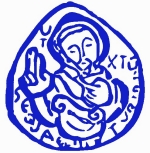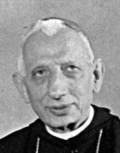 Today is the 31st anniversary of the foundation of Fraternity of Communion and Liberation. The narrative of the Fraternity’s founding is told in “The Greatest Grace in the History of the Movement” by Giorgio Feliciani (Traces, February 2007). Here’s the story.
Today is the 31st anniversary of the foundation of Fraternity of Communion and Liberation. The narrative of the Fraternity’s founding is told in “The Greatest Grace in the History of the Movement” by Giorgio Feliciani (Traces, February 2007). Here’s the story.
A priest in the direct service of the Holy See, Monsignor Mariano De Nicolò, currently Bishop of Rimini [he retired 3 July 2007], happened to review, as part of his official duties, a file that illustrated and documented the Movement’s desiderata. Feeling that these aspirations deserved attention and further study, he suggested to Father Francesco Ricci, who at the time was sharing responsibility for the Movement with Father Giussani [for more about this priest, who died in 1991, see Francesco Ricci. Una passione, cento passioni,
San Martino in Strada, Lit. Citienne, 1996], that he consult with Monsignor Giuseppe Lobina, an expert in Canon Law who, along with a solid formal training, had an unusual amount of experience with ecclesiastical praxis.
This advice was promptly taken and, only a few months later, Monsignor Lobina, after acquiring all the necessary information in various meetings with CL figures and Father Giussani himself, was drawing up what would soon be the Statute of the Fraternity, which has remained largely unchanged up to now.
Monsignor Lobina also undertook to find the ecclesiastical authority willing to approve the Movement, and found him in Abbot Martino Matronola, who, as provost [abbot] of the monastery of Montecassino, had the same powers over the surrounding territory as the bishop of a diocese. This acceptance was even more welcome because Father Giussani felt that the concept of his Movement was very close to that of the Benedictines (see Giussani, op.cit., pp. 74-75).
The formal establishment of the Fraternity came shortly thereafter in a very discreet, unassuming way. On July 11, 1980-the solemnity of Saint Benedict, Patron of Europe, on the fifteenth centenary of his birth-a small group of twelve stood together with Father Giussani in front of the Abbot to be constituted as a canonical association. On that same day, Monsignor Matronola,* by a specific formal decree, granted juridical status in the Church to the ecclesial movement called “Fraternity of Communion and Liberation” and approved its statutes and “works of apostolate and individual and social formation,” placing it under the “protection of the Immaculate Virgin and our Patron Saint Benedict” (see the Bollettino Diocesano di Montecassino, no. 3, 1980, pp. 223-224).
Thus, the Fraternity was born as a reality in the Church, recognized to all effects by the ecclesiastical authority and by virtue of this formal empowerment to act, in communion with its respective bishops, not only in Montecassino but also in the other dioceses. Indeed, in the same decree, the Abbot expressed his “fervent wish that wherever the Association exercises its apostolic activity, it may be benevolently welcomed, aided, and encouraged by their Excellencies the Ordinaries.”…
Despite the lack of any kind of organized promotion, adherence to the Fraternity was growing rapidly, to the point that within a year the number of members went from the original 12 to almost 2,000. …
The Abbot of Montecassino was certainly aware that his decree would provoke harsh criticism from those bishops who did not view CL with a favorable eye. One of the leading figures in the Italian Bishops Conference went so far as to state that the decree had been illegally extorted from him. And, realistically, an attentive Canon lawyer noted, “The Abbot of Montecassino was brave (some would say bold) to approve an association that is not diocesan, but evidently multi-diocesan.” In this situation, the recognition generously and courageously granted by the Abbot of Montecassino was no longer sufficient to give the association a juridical form that corresponded with its actual reality. By now, the approval of a higher authority was needed, which could only be the Holy See, and more specifically the Pontifical Council for the Laity, the dicastery set up by Pope Paul VI to handle matters concerning the participation of the laity in the life and mission of the Church.
Consequently, as early as April 7, 1981, less than a year after the decree issued by the Abbot of Montecassino, Father Giussani, with the continued encouragement and advice of Monsignor Lobina, sent the President of the Council, at that time Cardinal Opilio Rossi, a formal application for pontifical recognition of the Fraternity. …
In the end, the Holy Father, John Paul II himself, intervened: after being fully informed about the question, he encouraged the Pontifical Council to proceed to grant the desired approval without further delay (according to the Decree of the Pontifical Council for the Laity, p. 235).
Thus, we come to the Decree, issued on February 11, 1982, the liturgical feast of Our Lady of Lourdes, which “establishes and confirms as a juridical entity for the universal Church” the Fraternity, “declaring it to all effects an Association of Pontifical Right and decreeing that it be recognized as such by all.”
As is known, February 11, 1982, the Feast of Our Lady of Lourdes, is recognized as the establishment of the Fraternity of Communion and Liberation. It is this date that CL prays the Mass for the good of the Fraternity. Historically, as noted above, the Archabbot of Monte Cassino, on Saint Benedict’s 1500th birthday, recognized the CL as an ecclesial movement, an act that caused much criticism for being perceived as taking authority not his own. Two years later Pope John Paul II addressed the criticism, and on the feast of Our Lady of Lourdes had the Fraternity of Communion and Liberation recognized by the Pontifical Council for the Laity under the leadership of Opilio Cardinal Rossi. Hence, Our Lady of Lourdes and Saint Benedict are patrons of the Fraternity Communion and Liberation.
*Martino Matronola (1903-1994) was born in Cassino, Italy, the city below the great Benedictine abbey of Monte Cassino where he was elected the archabbot in 1971 and appointed bishop in 1977. The Abbey of Monte Cassino is known as the archcoenobium because it is the one of the monasteries founded Saint Benedict; the abbey is also distinguished for being an abbey-nulius (a territorial abbey, meaning the abbey is responsible for a number of parishes). Therefore, the man elected the archabbot of Monte Cassino is also the Diocesan Ordinary of the Diocese of Cassino which has 53 parishes, 68 priests and 79,000 faithful to care for (according to 2004 stats). He retired from the position of abbot-bishop of Monte Cassino in 1983.
